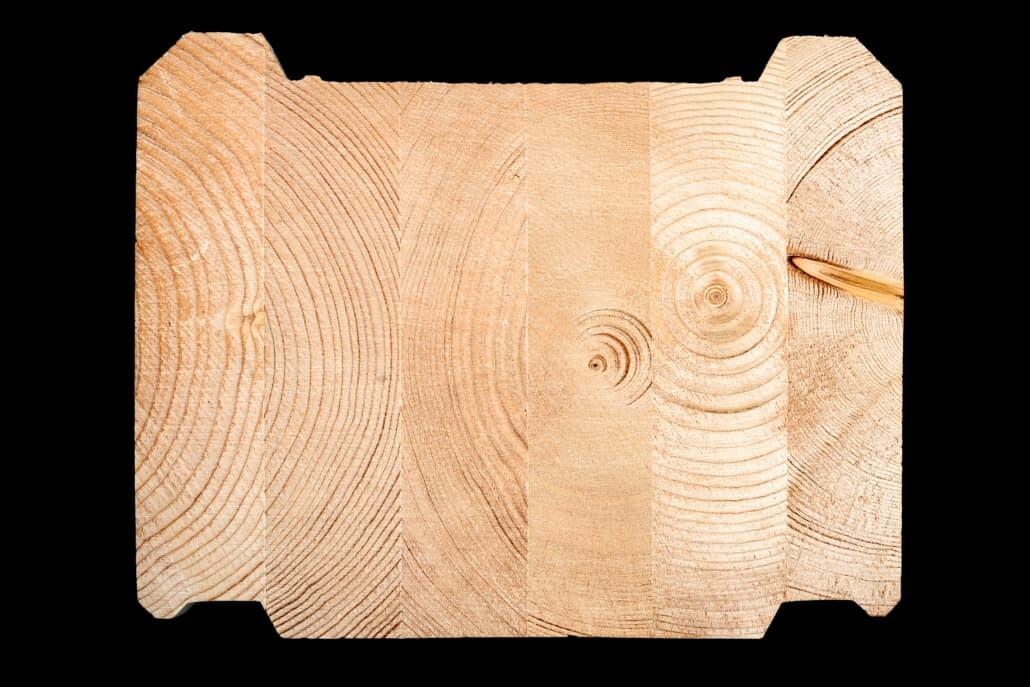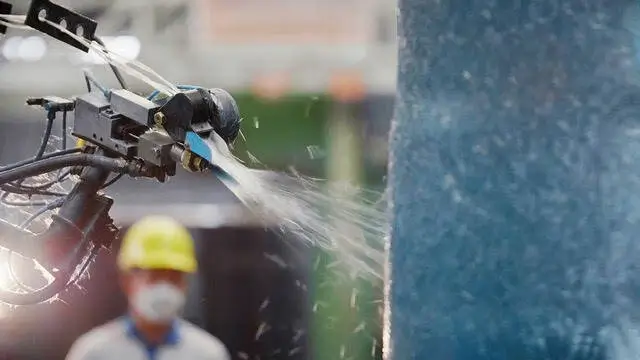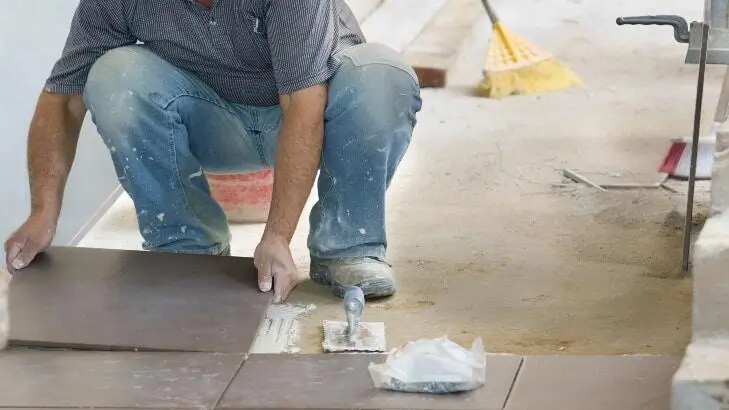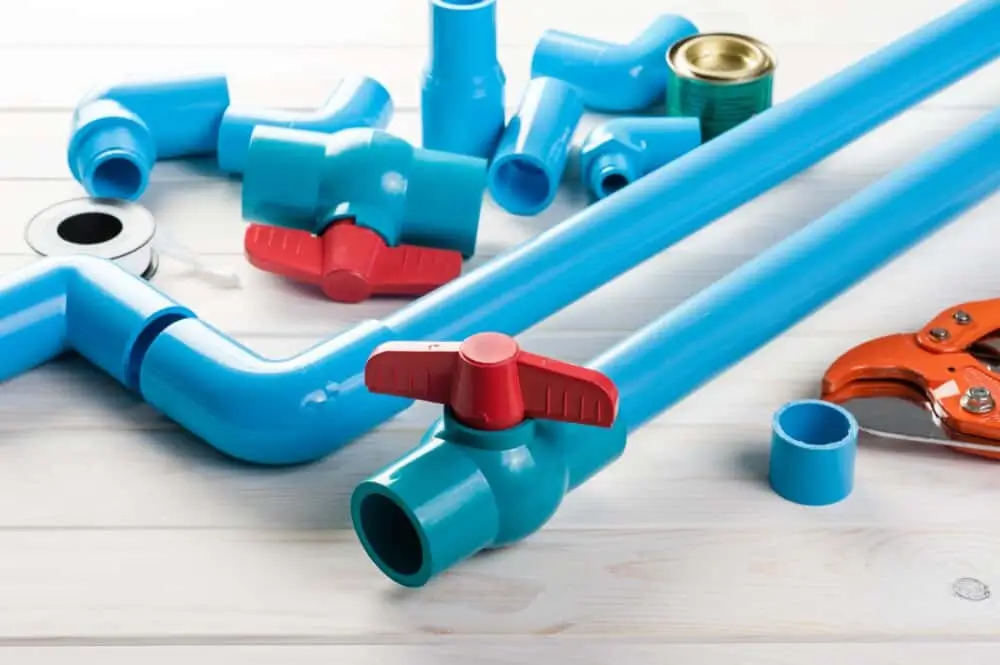Adhesives for timber laminating

Ever-growing demand for adhesives for timber laminating
The construction industry is currently experiencing a shift towards wooden materials which are generally more sustainable than conventional construction materials such as steel and reinforced concrete. This trend brings adhesives for timber laminating into the picture: the right timber adhesive enables even high-rise buildings made of wood by allowing for extremely strong laminated timber which is as safe as other materials also in earthquake sensitive regions. The main benefit of laminating timber is that it makes wood as strong as concrete or steel but is much lighter in weight.
Adhesives for timber laminating are used in cross laminated timber (CLT) and glue laminated timber (glulam) which exist as I-beams, straight laminated beams, curved laminated beams and wall beams. The task of the lamination adhesive is to keep the different layers of the beams together. The beams enable stronger and lighter bearing structures than solid wood of same thickness.
Laminating timber enables high-rise buildings made of wood
The wood laminating adhesive market is currently experiencing rapid growth, as wood has become a more desired construction material. Even though wood is usually considered a fire sensitive material which is generally weaker than concrete and steel, timber laminating allows for beams that are strong enough as bearing structures are treated to increase their fire resistance.
Lately glulam and cross laminated timber have also become trendy materials in constructions of high-rise buildings. The tallest wooden tower is currently Mjøstårnet located nearby Oslo, Norway. The building is made entirely of wood and timber: glulam and CLT beams play an important role in the bearing structures of the tower.
Different types of adhesives for timber laminating
Timber laminating of structural wood beams such as cross laminated beams and glue laminated beams can be done with several different types of adhesives. Each type provides strong bonds and enhances the beams´ load bearing capacity. The choice between the types should be based on the type of wood, the environment´s requirements as well as the desired application method and most convenient curing process. If the timber has been treated with a preservative prior to laminating, the compatibility of the preservative and laminating adhesive must be verified.
Below we will describe three of the most common adhesive systems used for laminating construction timber. The types differ from each other by consistency and curing method, and they can be modified to meet specific requirements crucial for your application.
1. Melamine (urea) formaldehyde adhesives
Melamine formaldehyde (MF) and melamine urea formaldehyde (MUF) adhesives belong to the group of polycondensate adhesives which currently dominate the timber adhesives market. MF and MUF adhesives are multi component glues which require a hardener in order to set and cure. These timber laminating adhesives cure through the separation of water. The melamine based adhesives provide timber with colored glue lines which have enhanced water resistance. Additionally, especially MUF adhesives have natural resistance to fire and can, therefore, be used for timber laminating of beams even in demanding environments.

The melamine (urea) formaldehyde adhesives are the most versatile glues for timber. They are designed for load bearing constructions, but are also applicable to other smaller structures.
MF and MUF adhesives contain formaldehyde which, in some cases, is a substance to be avoided due to emissions caused by it. Fortunately, today's technology allows for highly sustainable melamine formaldehyde systems which emission rates are equal to the one of wood itself. These adhesives are currently not many in the market, however, the demand is growing rapidly. Might you want any additional information on low formaldehyde melamine based CLT and glulam adhesives, do not hesitate to contact us.
Uses next to glulam and CLT: multilayer boards, wall elements, finger jointed solid timber, Japanese laminate, solid wood applications and furniture.
2. Phenol Resorcinol formaldehyde adhesives
Also phenol resorcinol formaldehyde adhesives (PRF) cure by polycondensation and are multi component systems. PRF adhesives form dark colored glue lines which are extremely strong and resist both weather and water.
Phenol resorcinol formaldehyde adhesives are among the most common glues used for laminating timber in load bearing and non-load bearing constructions. As a conventional system, it is trusted by many manufacturers of wall beams, straight laminated beams and curved laminated beams (glulam).
Uses next to glulam and CLT: Japanese laminates and finger jointed solid timber
3. Laminating timber with polyurethane adhesives
Polyurethane (PUR) adhesive is a newer alternative to the formaldehyde containing conventional systems. The PUR adhesives are usually moisture curing (polyaddition), one component systems using the water in the wood structure to set and harden. This allows for fast curing in room temperature. Additionally, due to the fact that no hardener is needed, the adhesive does not require mixing, which makes the process more efficient and faster. Polyurethane wood laminating adhesives are also formaldehyde free, which makes them a more environmentally friendly choice than the alternatives.
Whereas PRF, MUF and MF adhesives can be brittle and stiff, PUR offers a more ductile solution which suits many timber laminating applications from contactless finger jointing to traditional bearing and non bearing structures.
Uses next to glulam and CLT: contactless finger jointing, wall elements, window and door scanting
Find the right adhesives for laminating timber
Choosing an adhesive for laminating timber is never a straightforward process whether you are looking for one for a new production line or a new one for an existing line. A multitude of factors must be considered, the efficiency and product durability being the most important ones. Therefore, in order to end up with the adhesive system most beneficial for your process and product, it is good to consult an expert. We at AdhesivePlatform are determined to provide you with all the necessary information and advice as well as forward your enquiry to our specialists to guarantee you the best possible adhesive for timber laminating.
Discover more solutions for building & construction
What solution are you looking for?
We are specialized in the building and construction. Need the best products or advice? Then please leave your details and we will get in touch.





